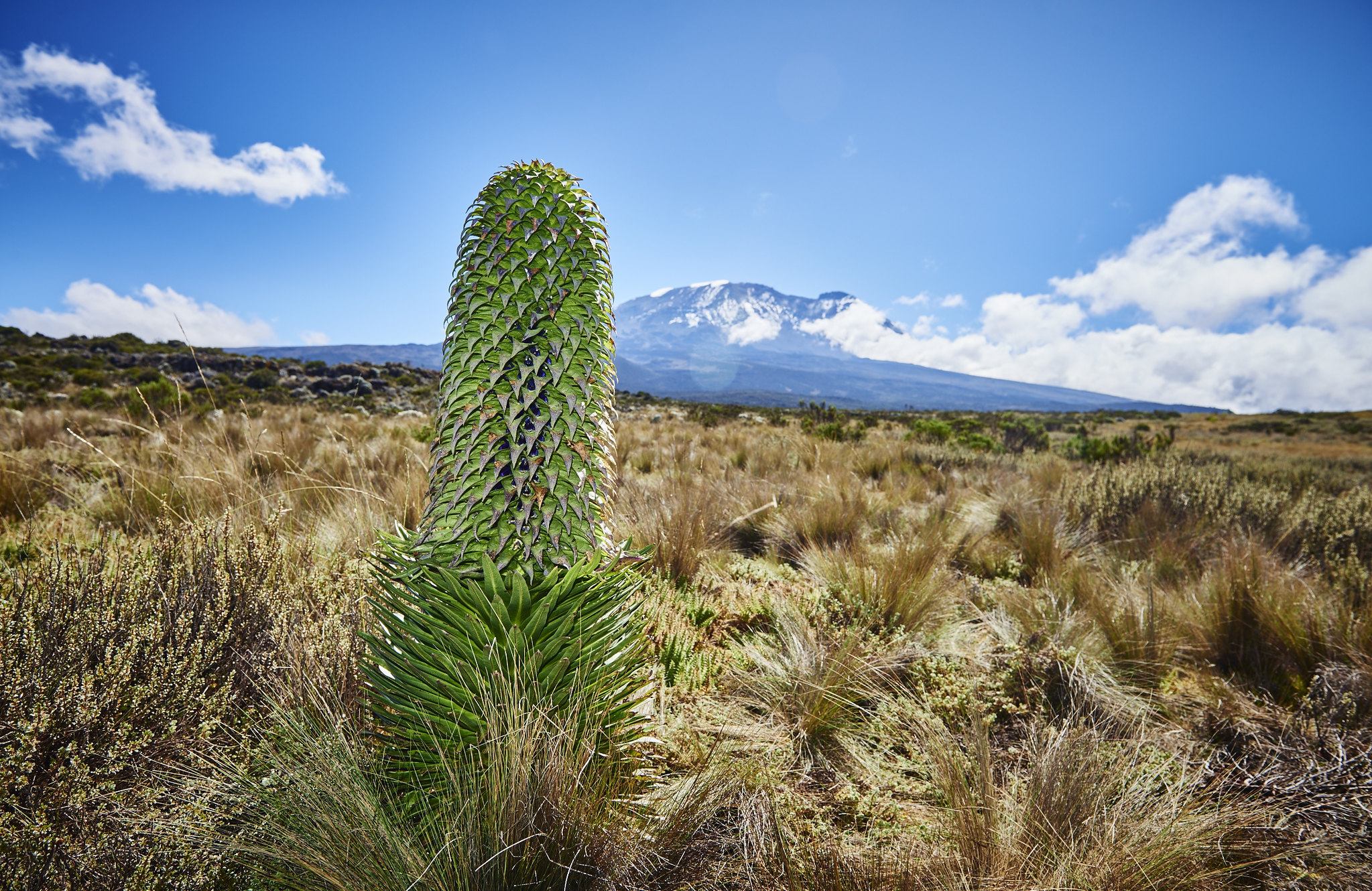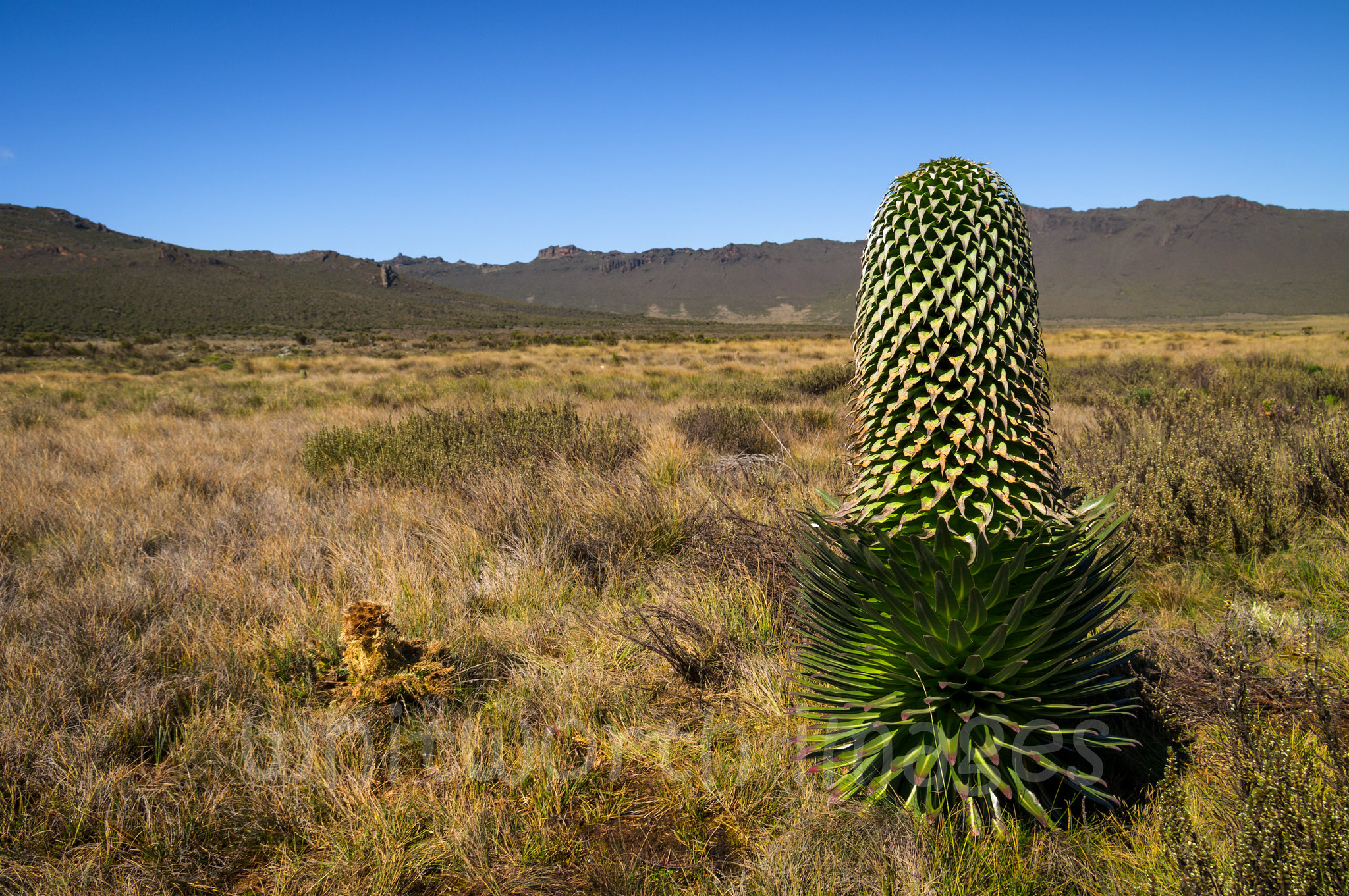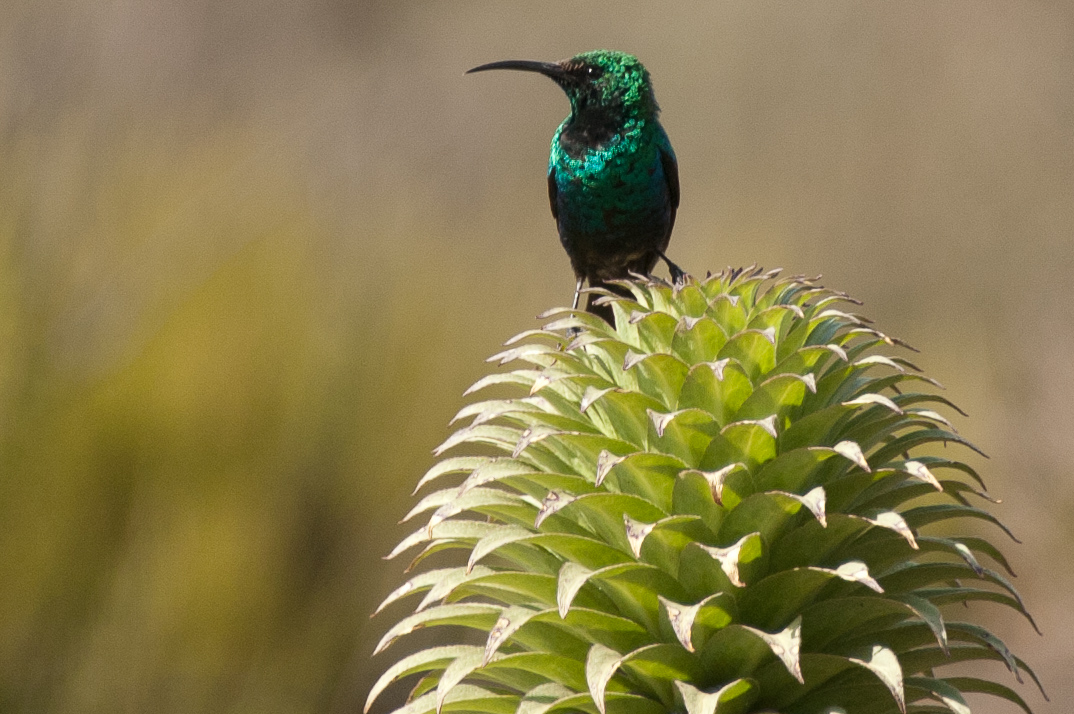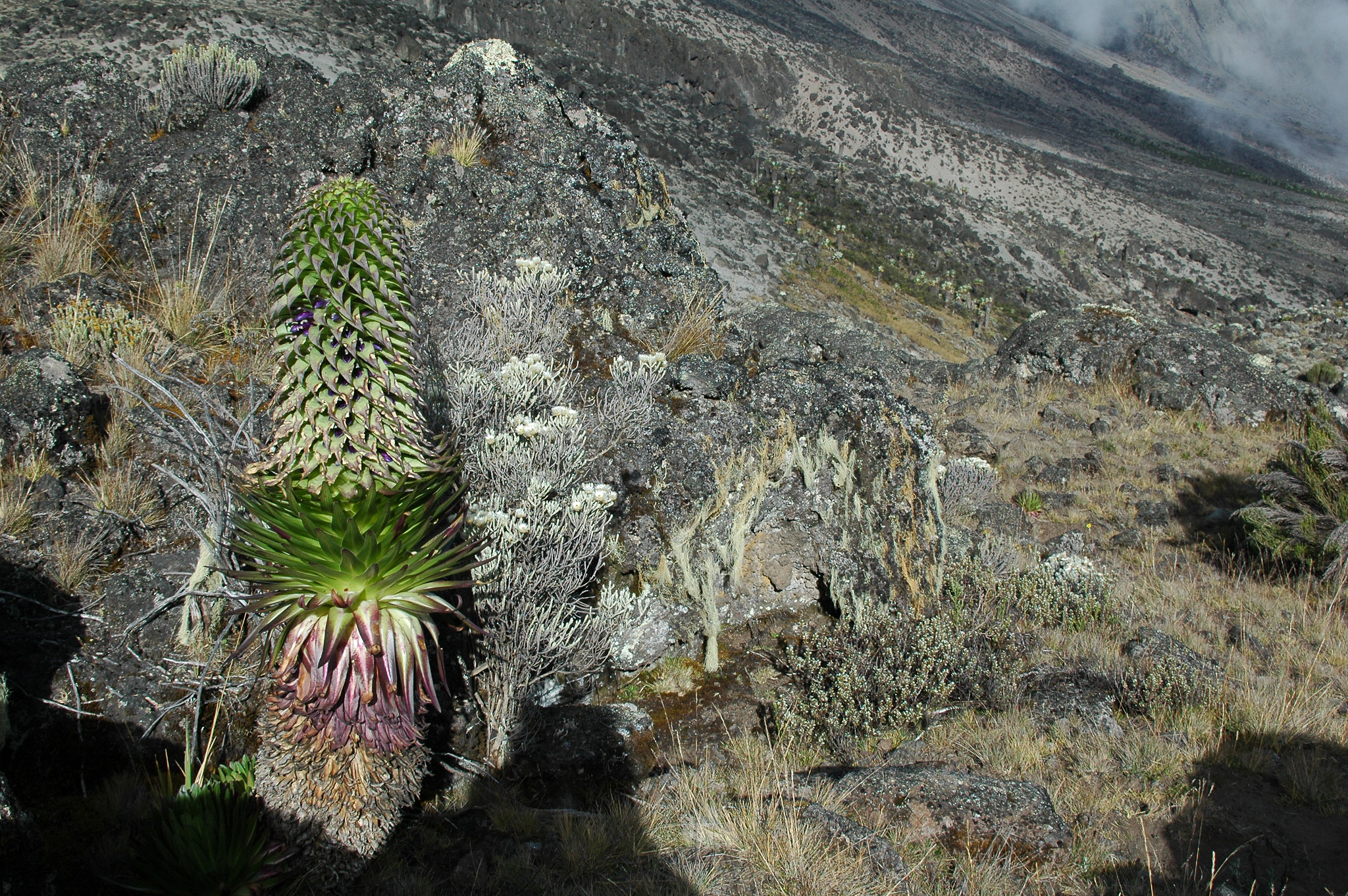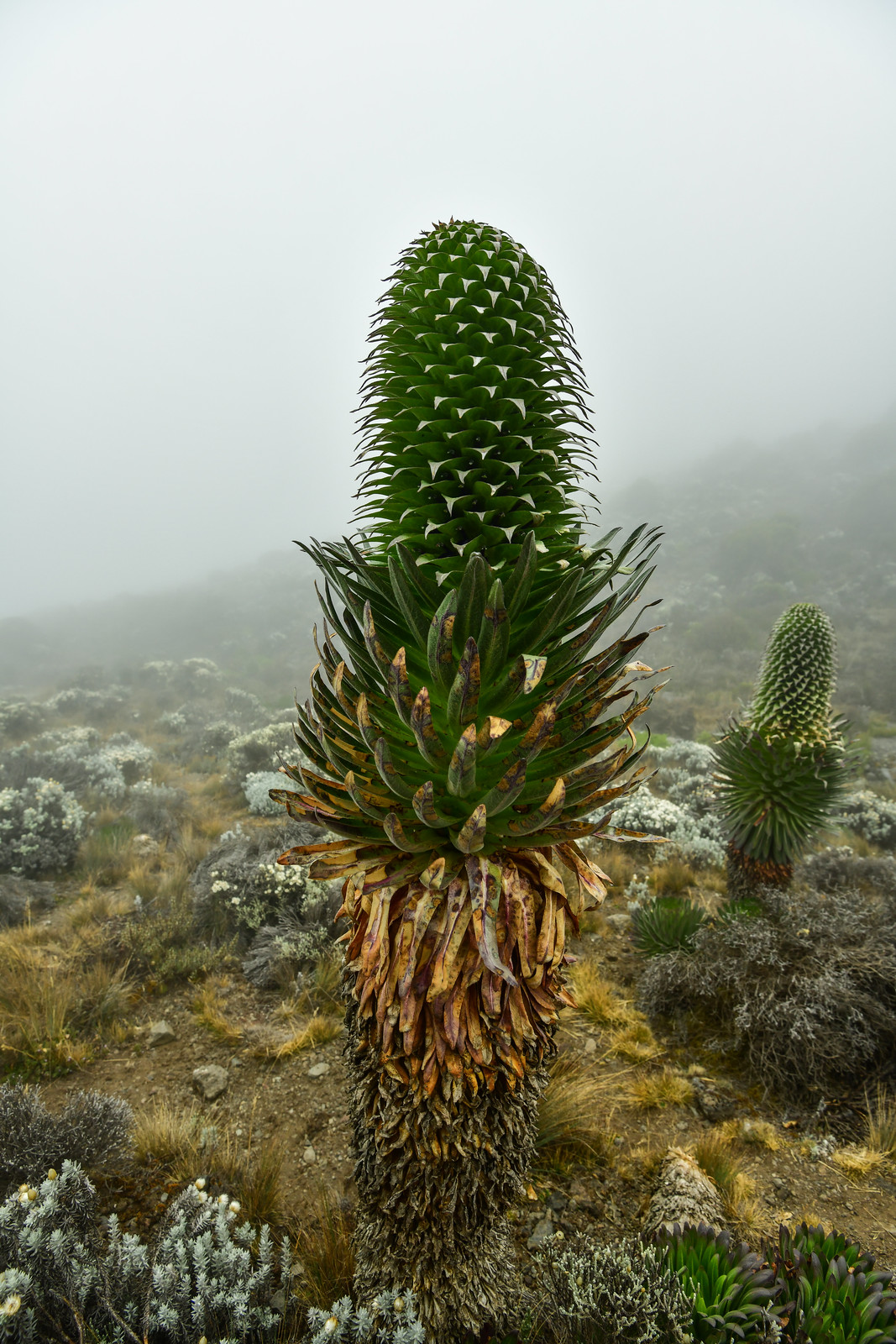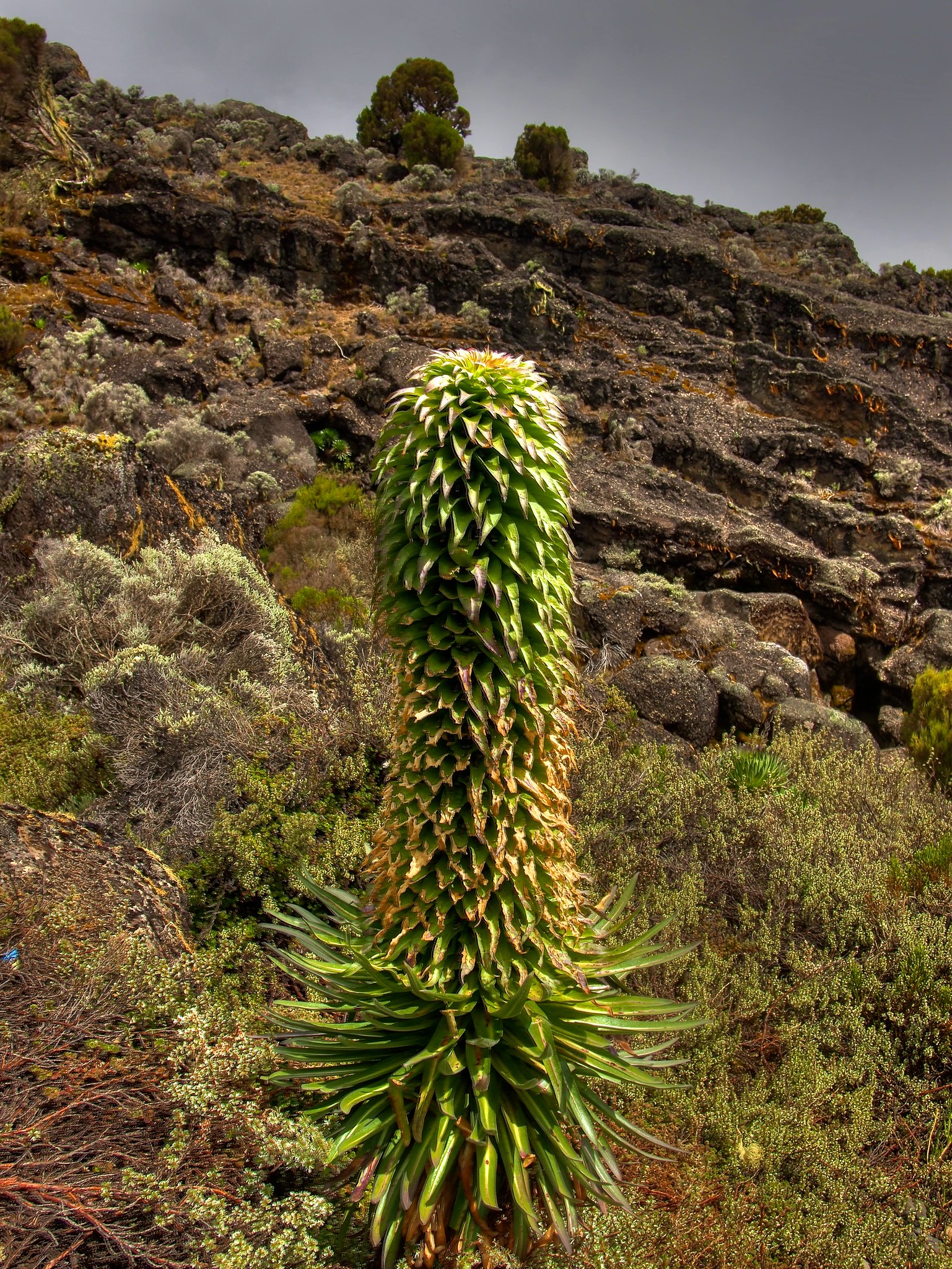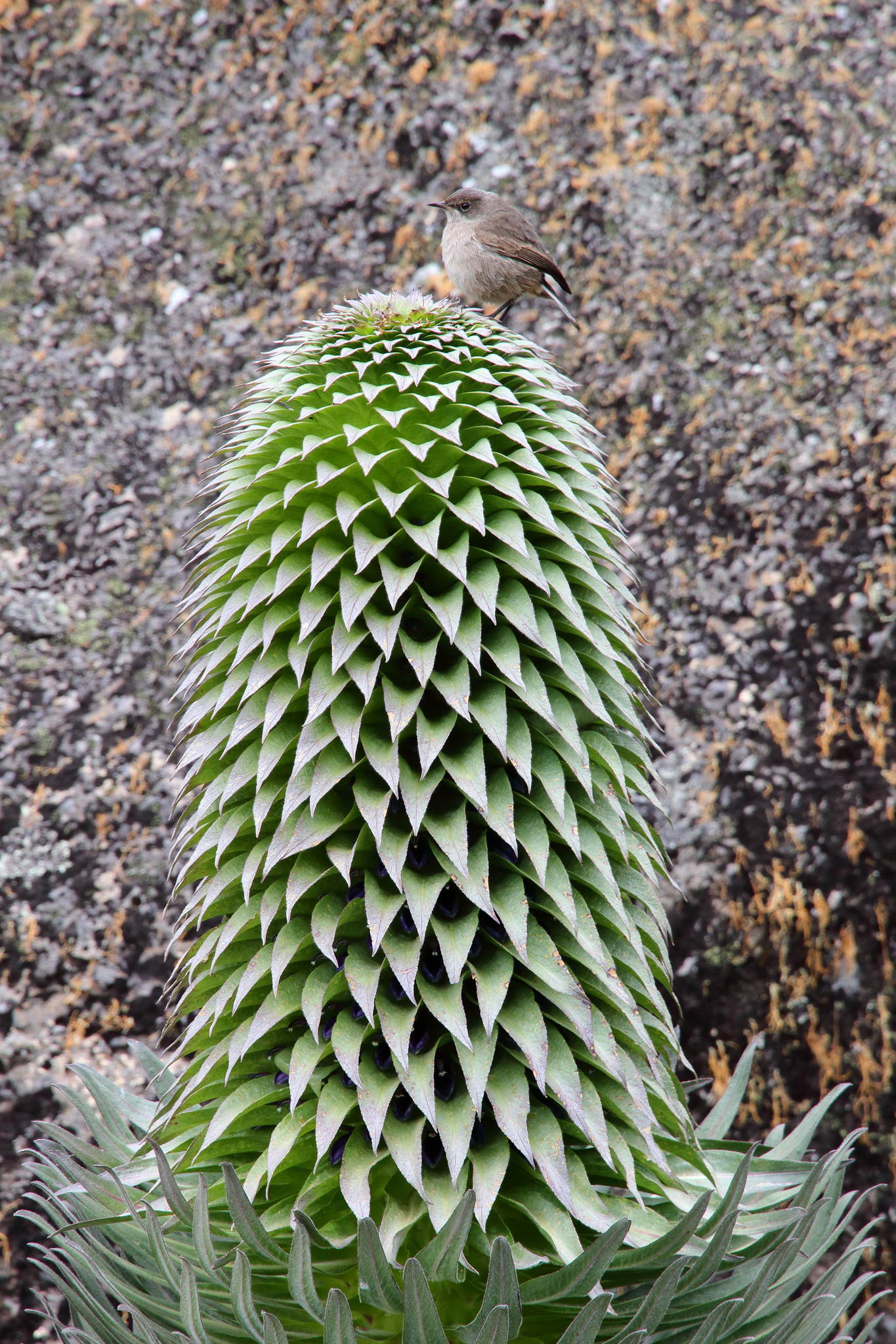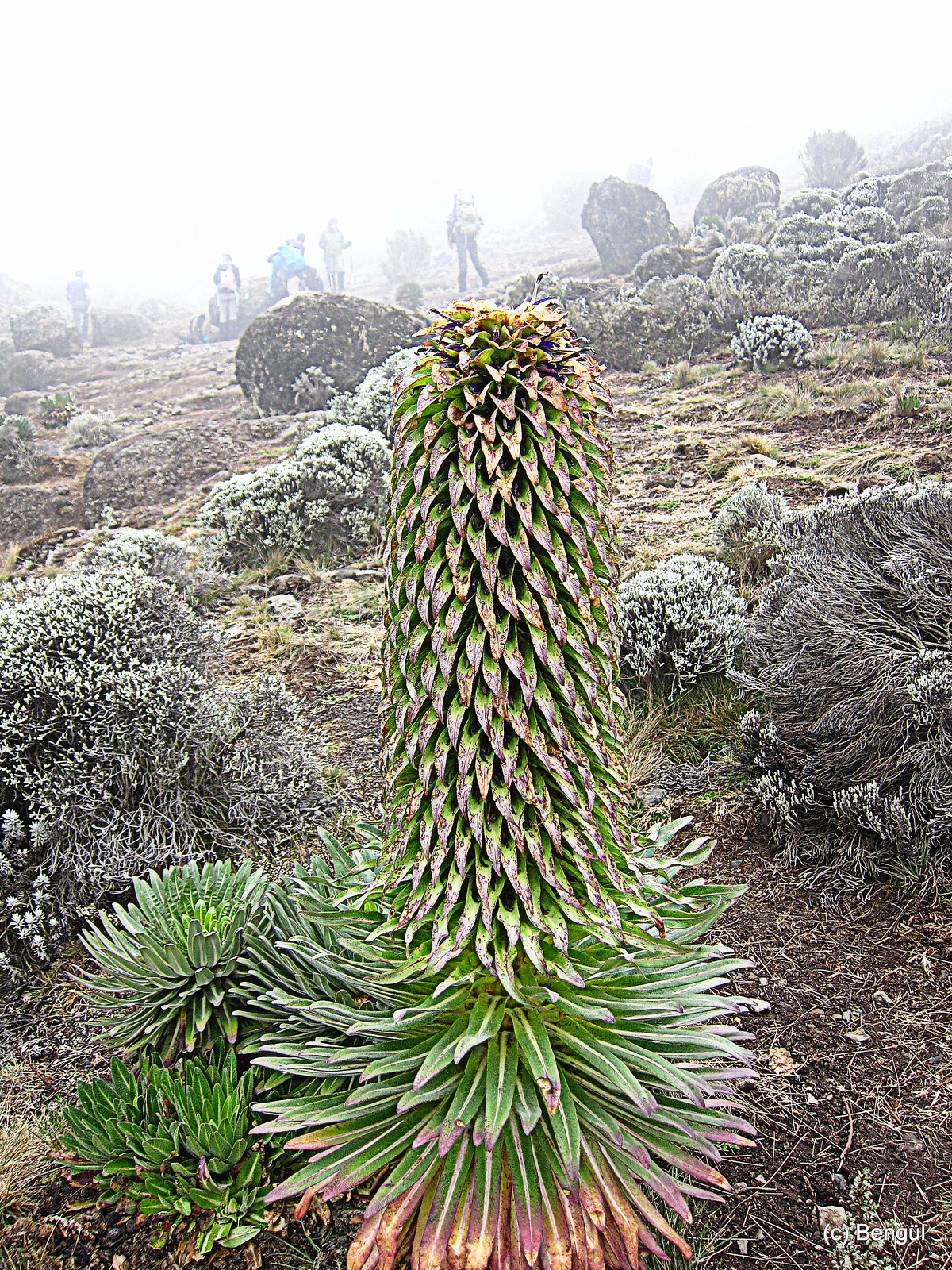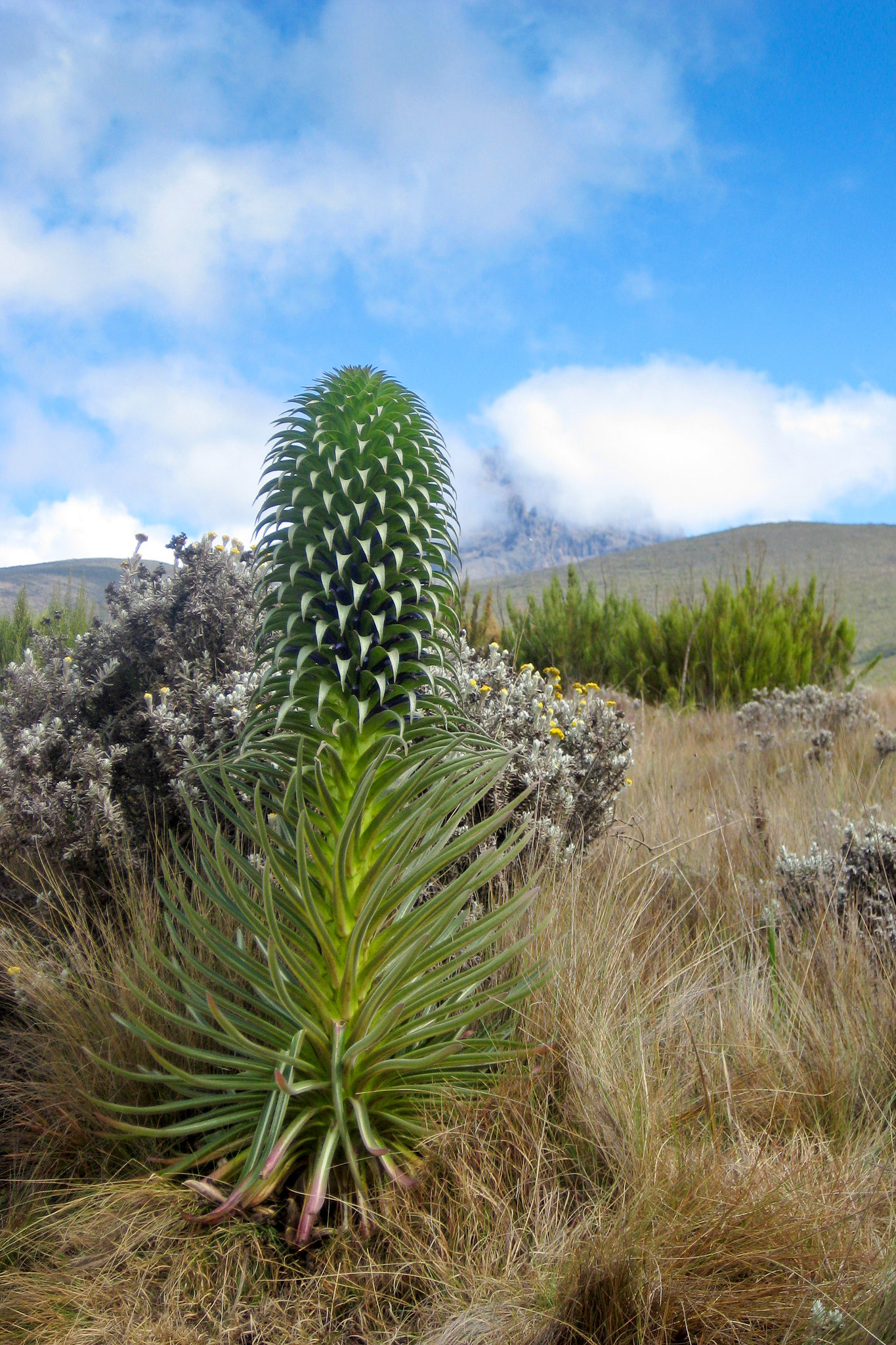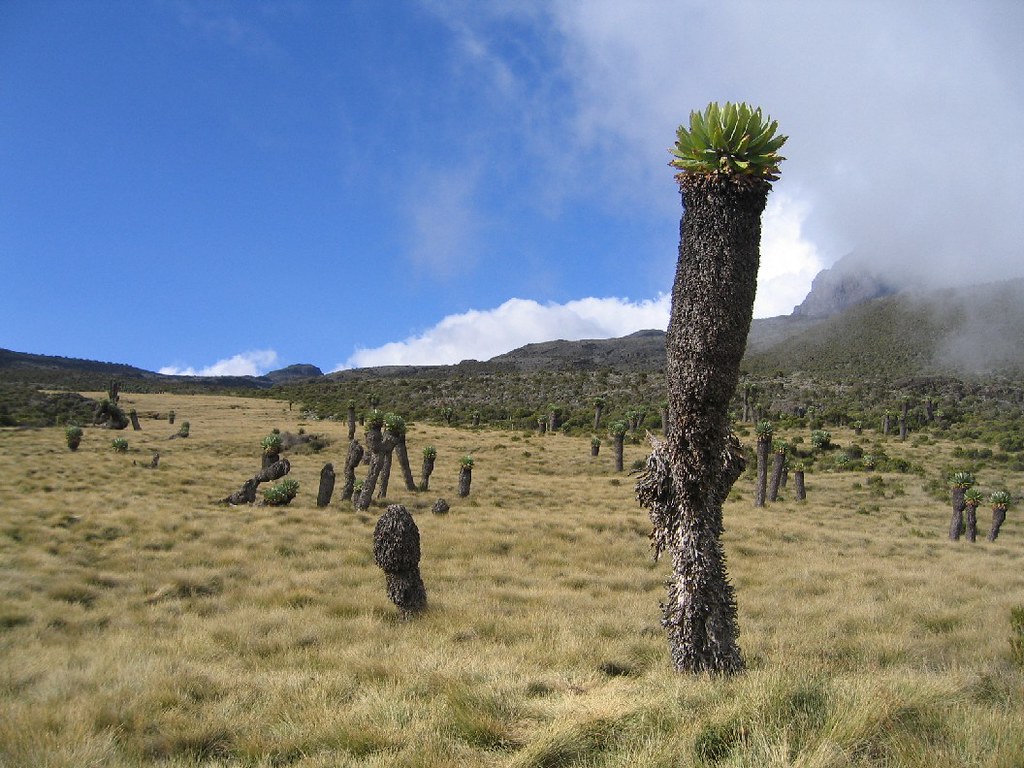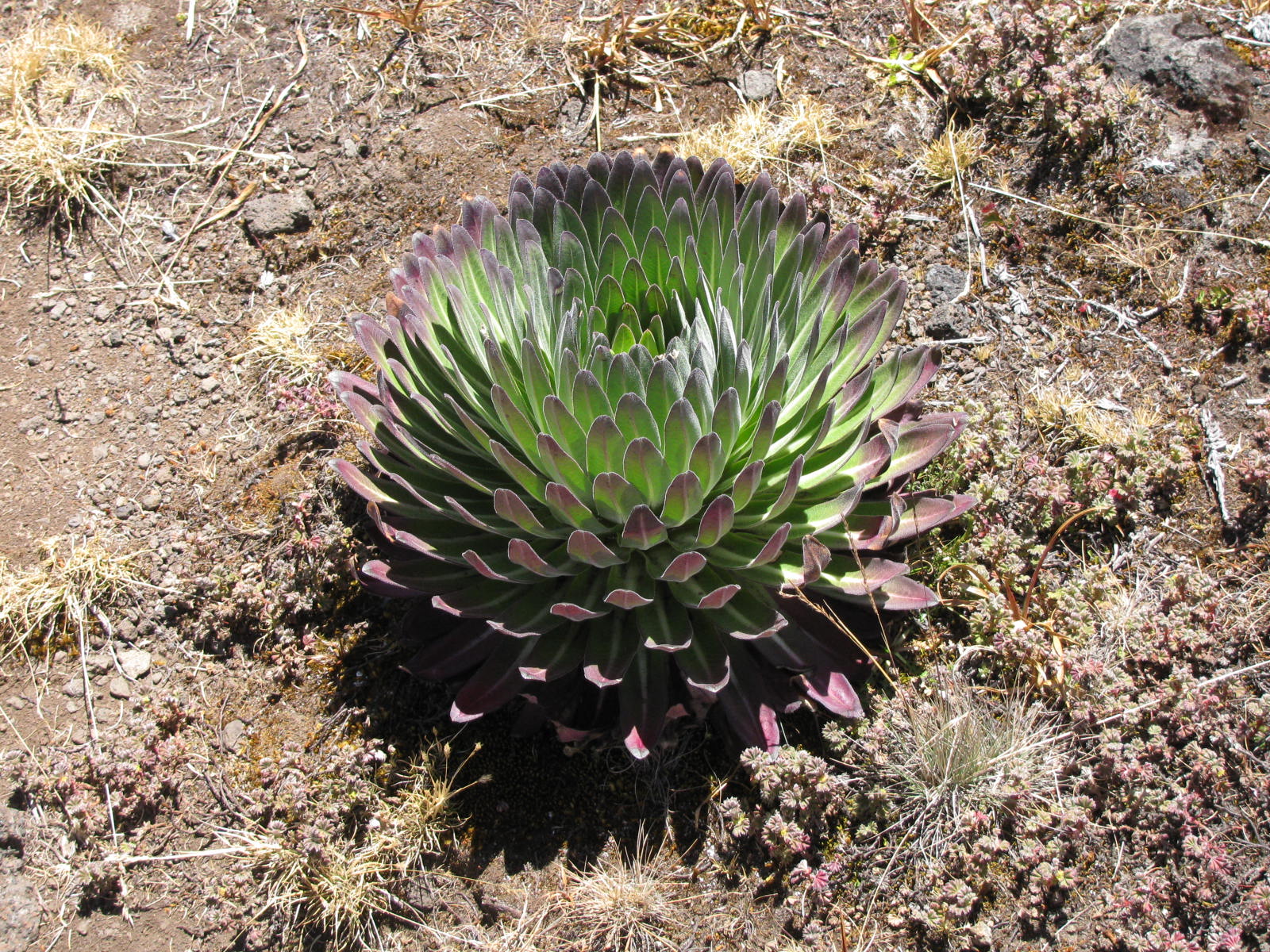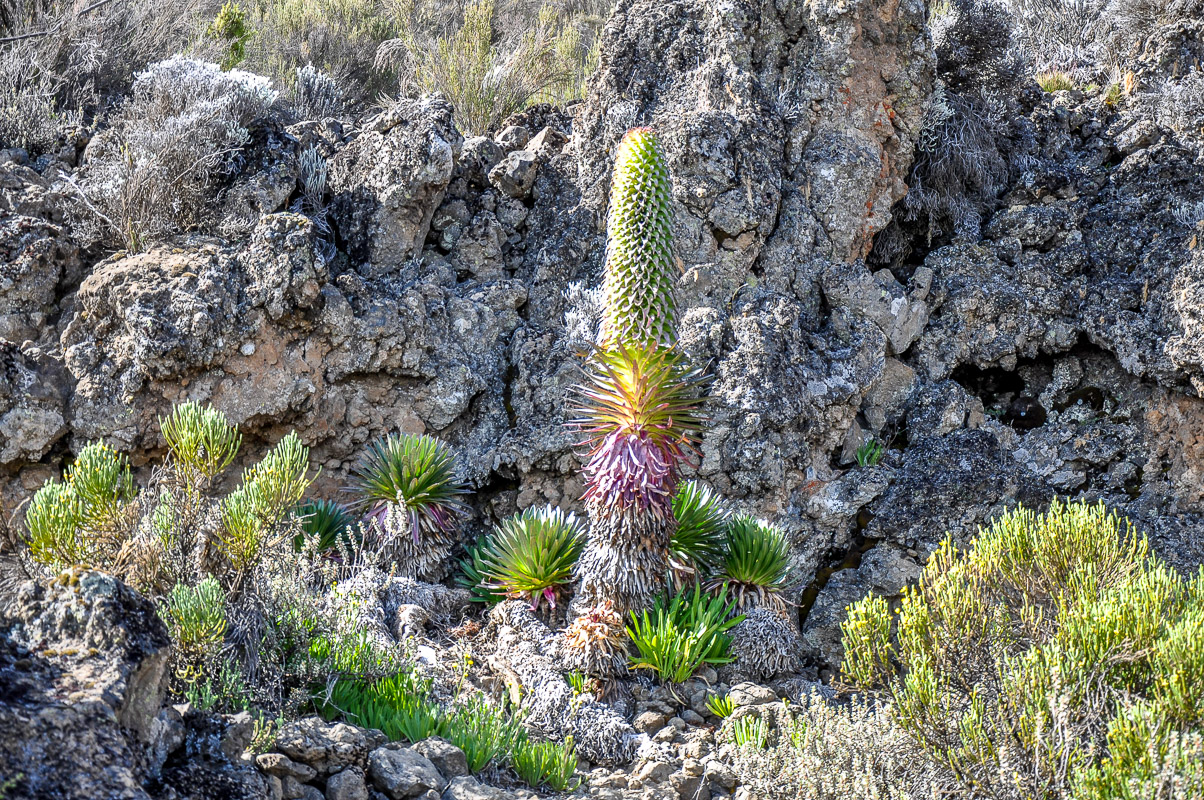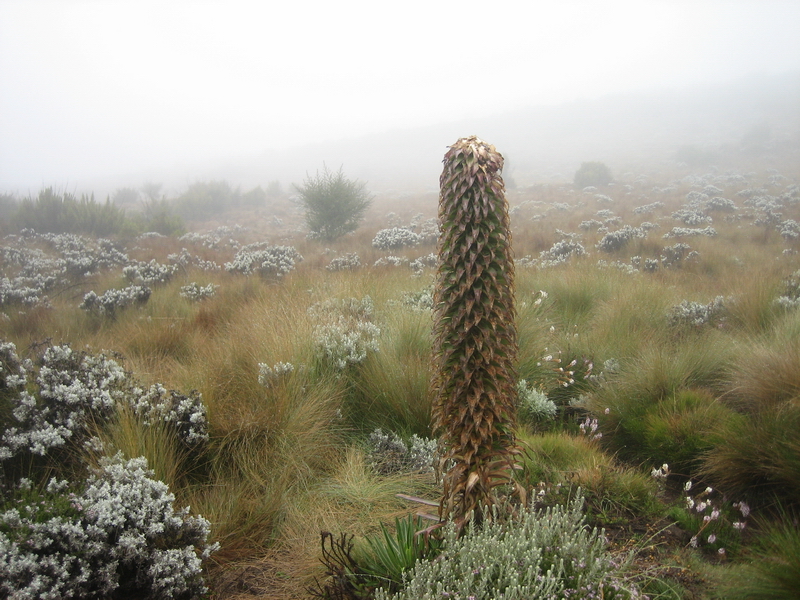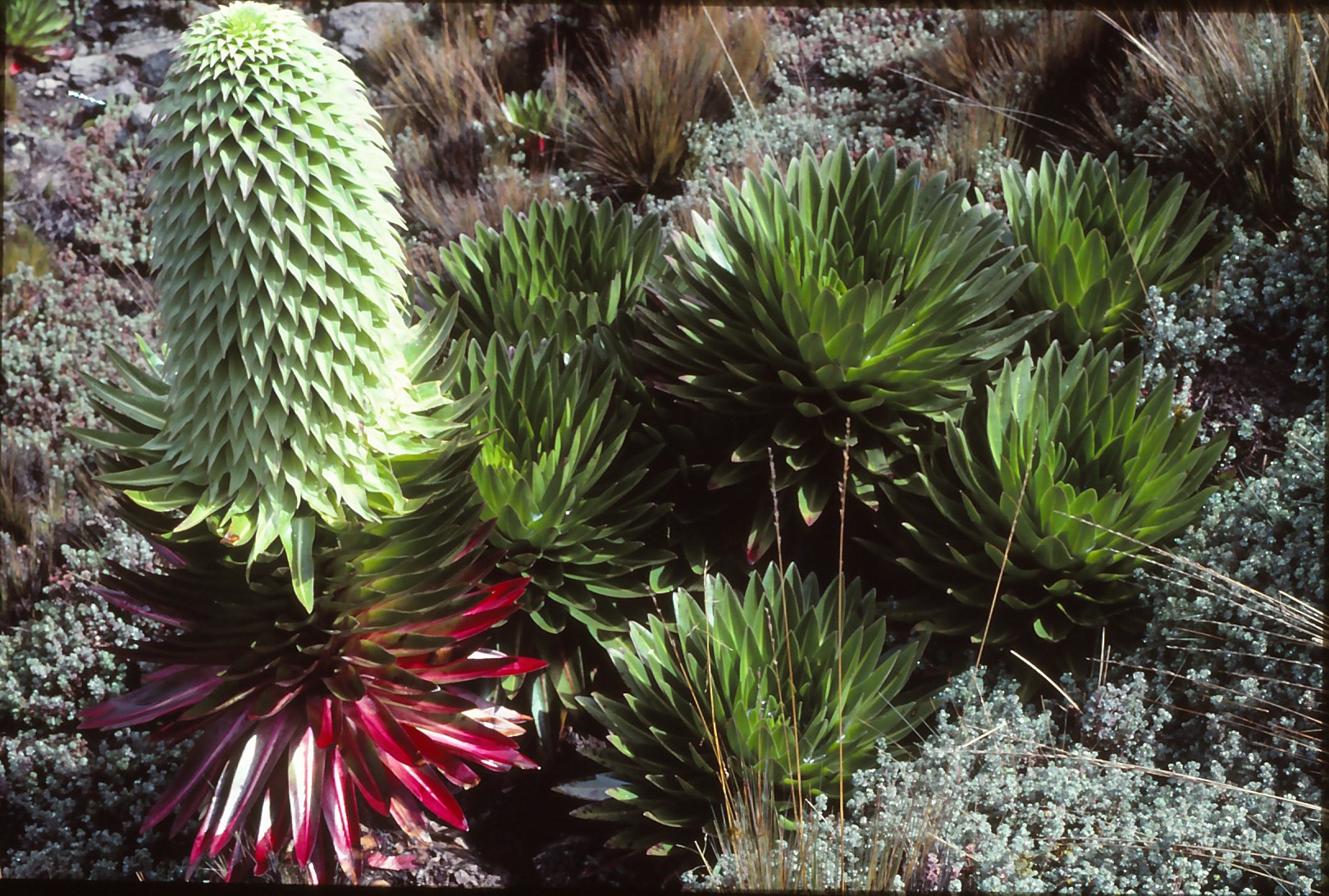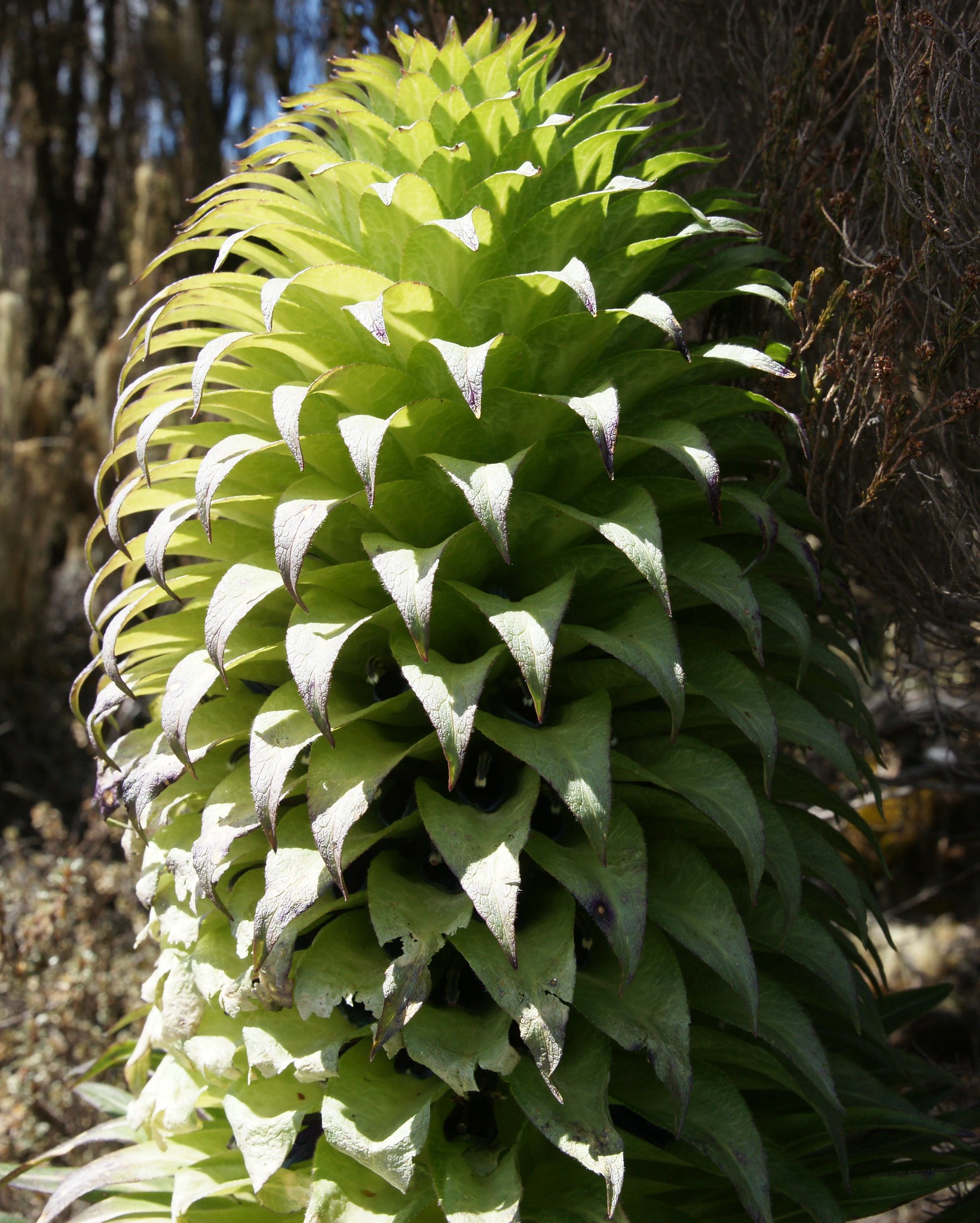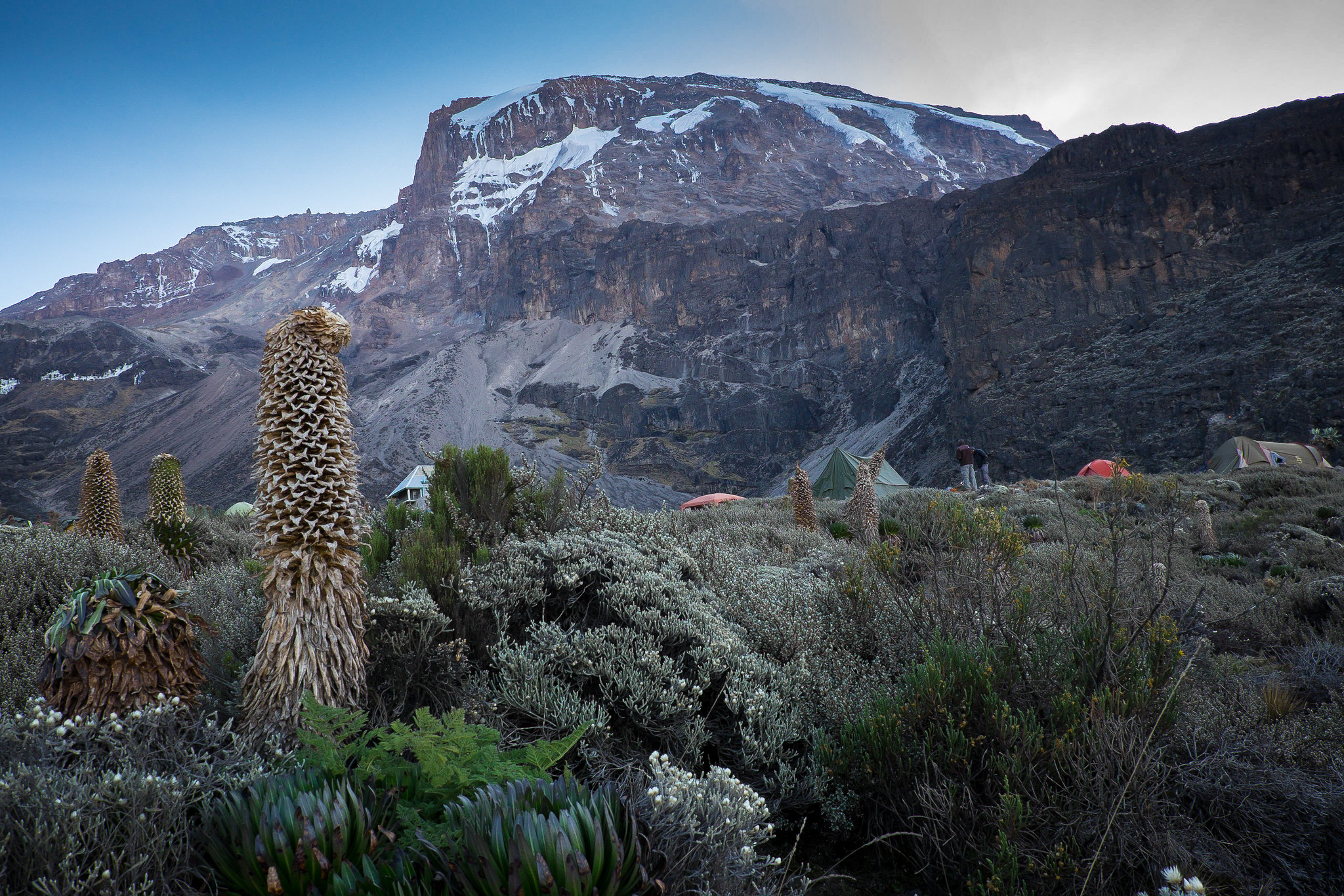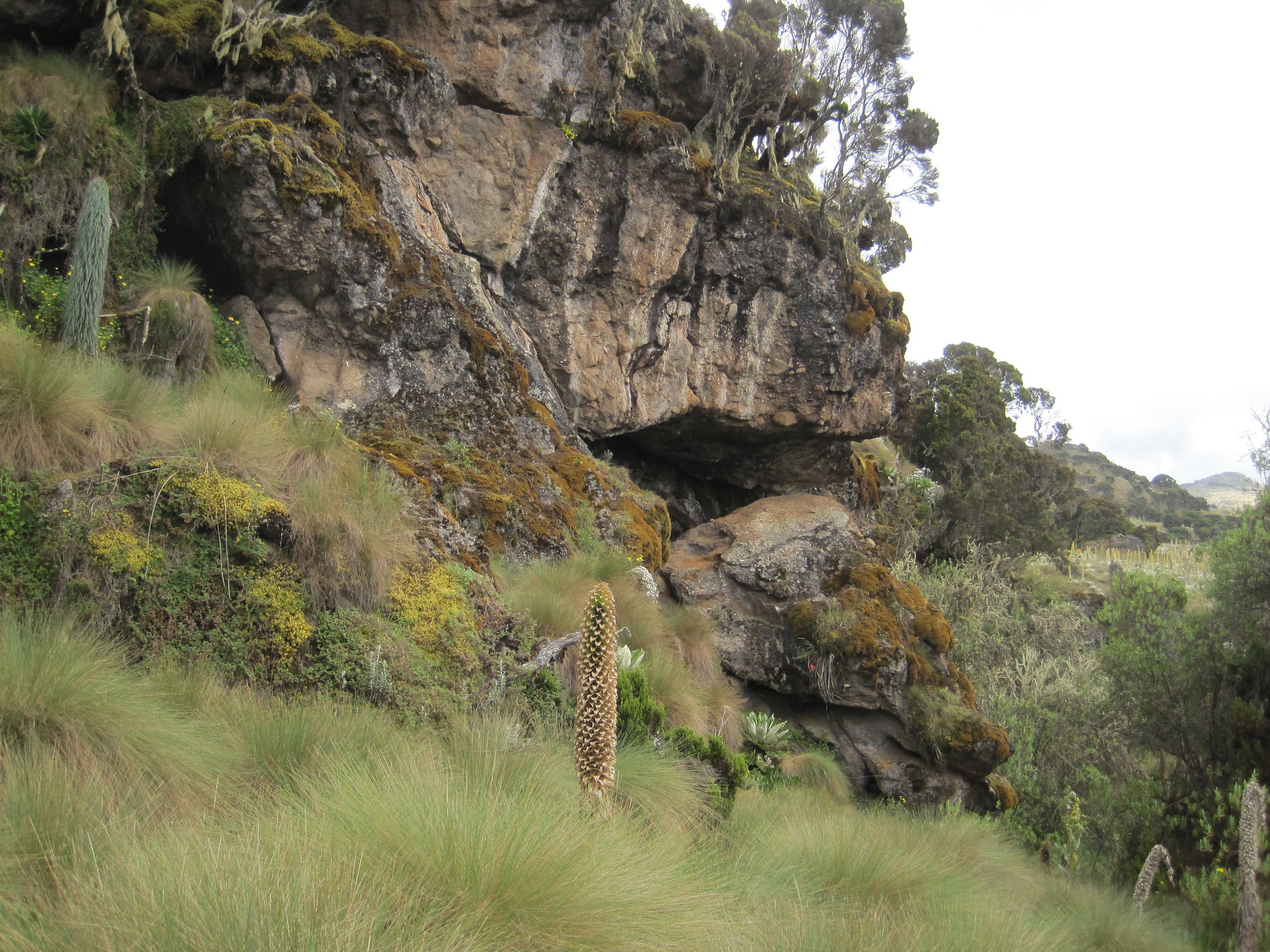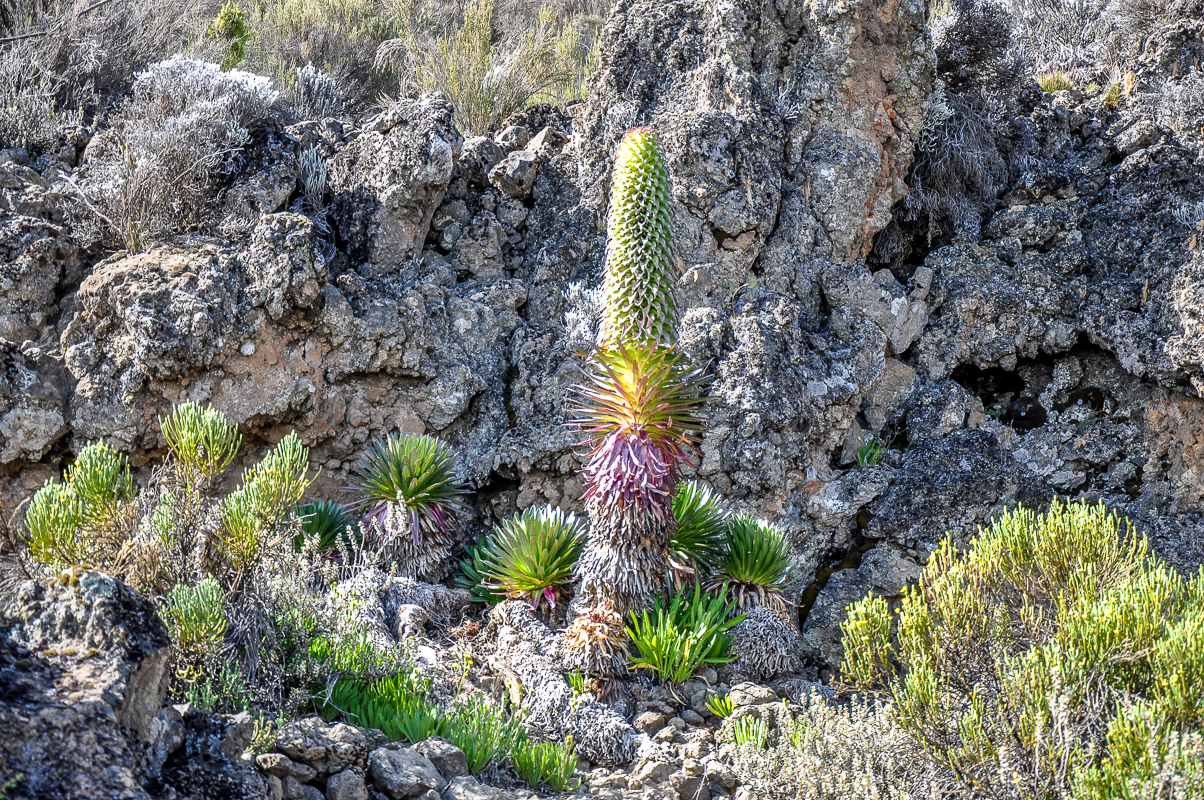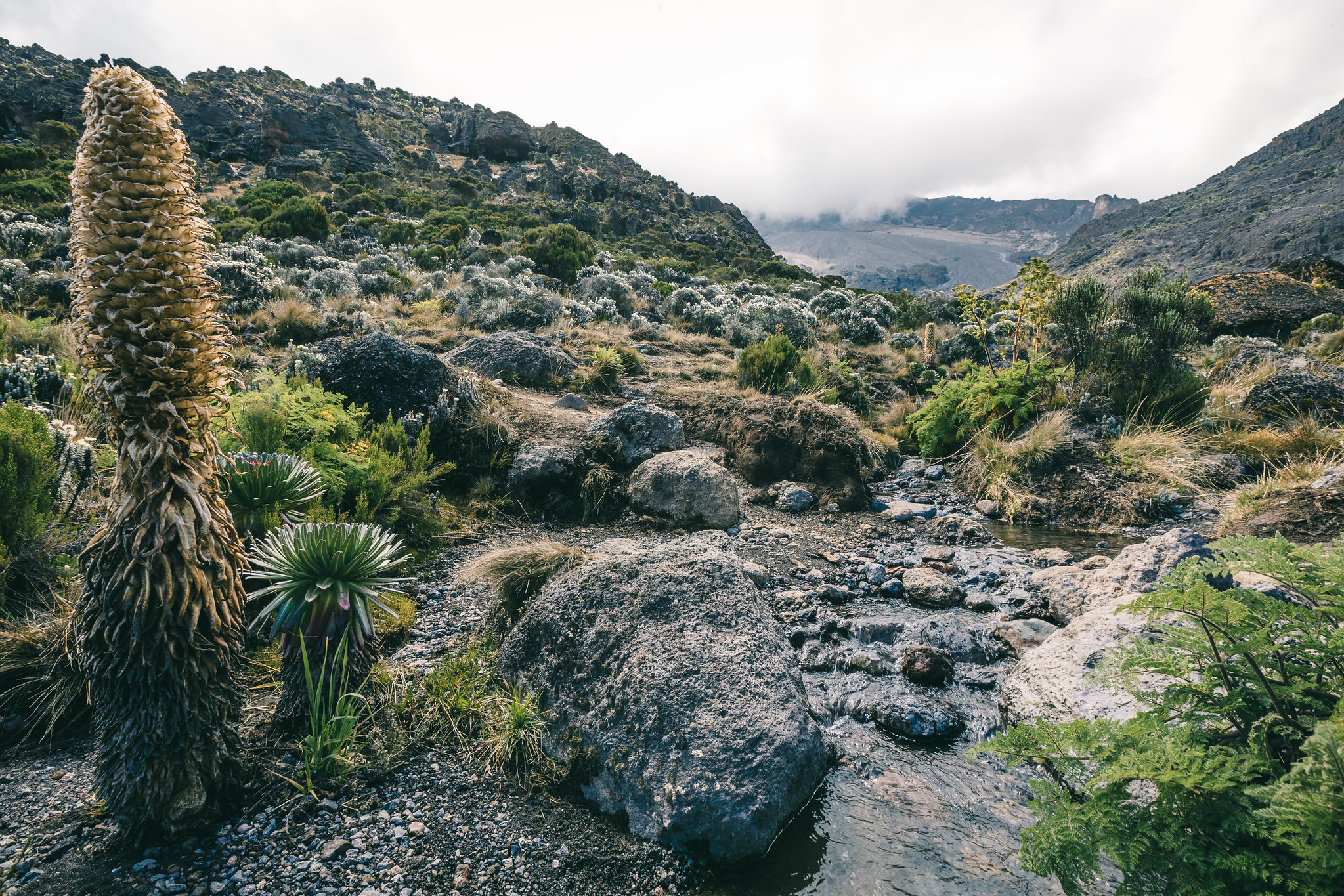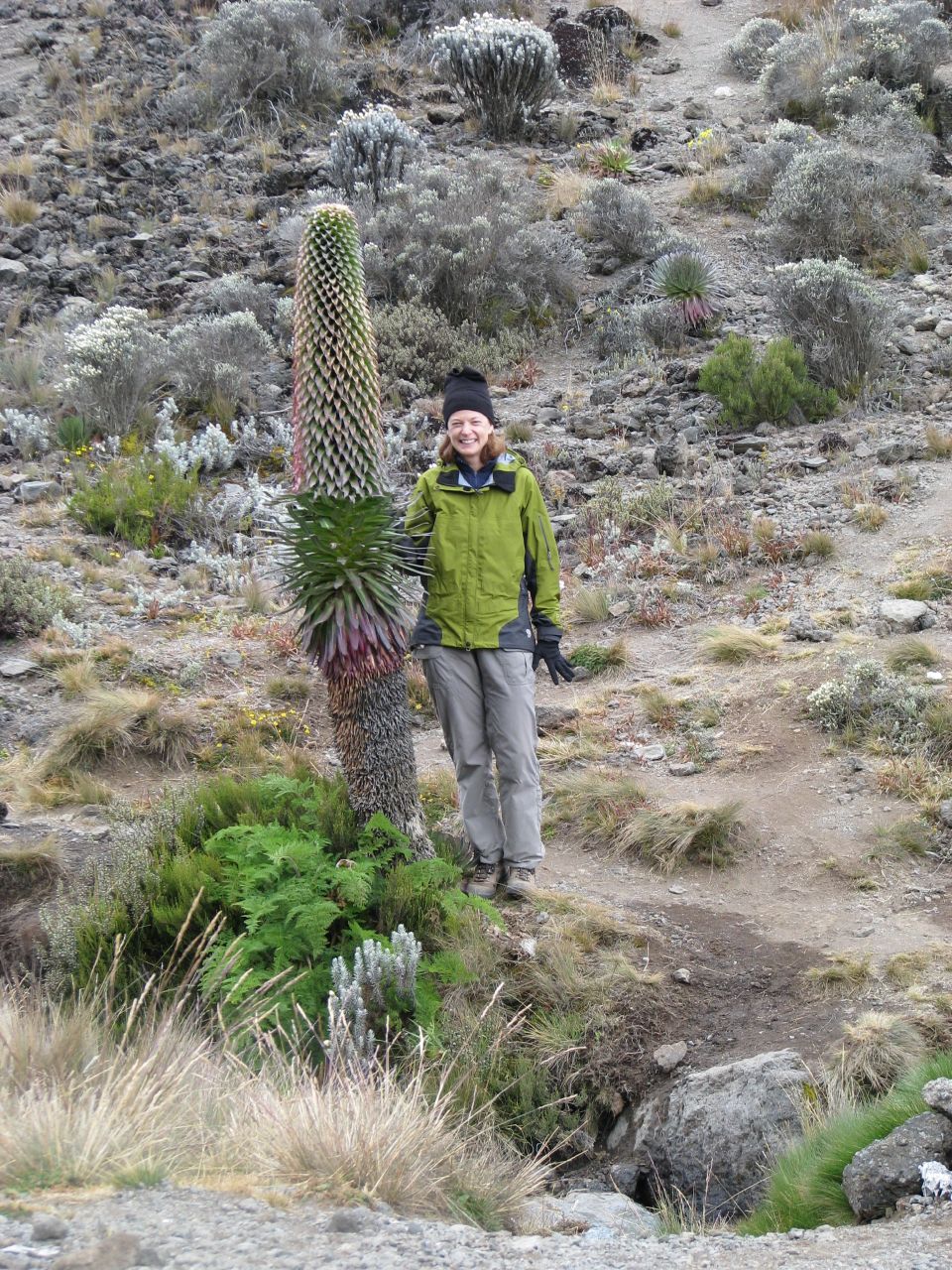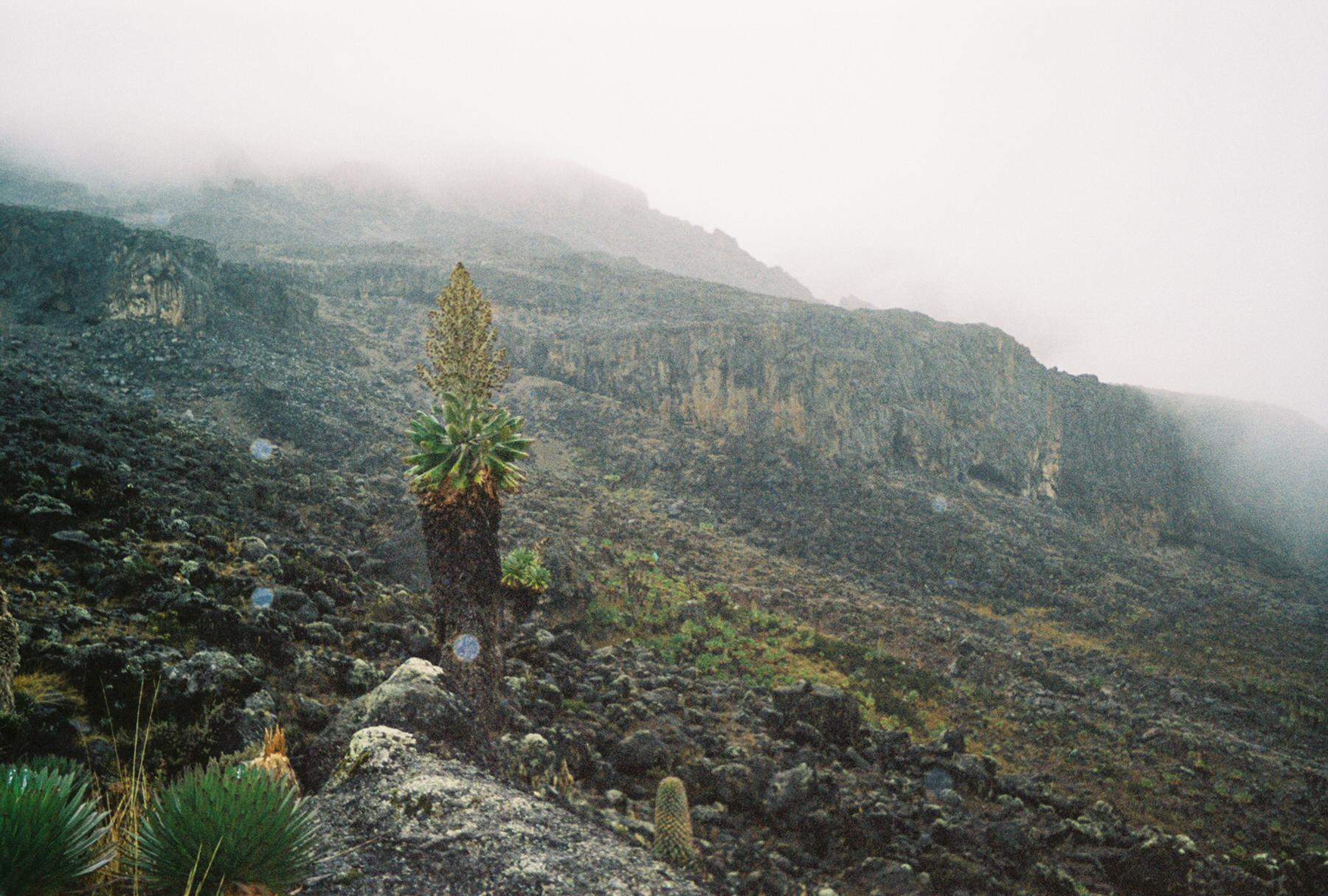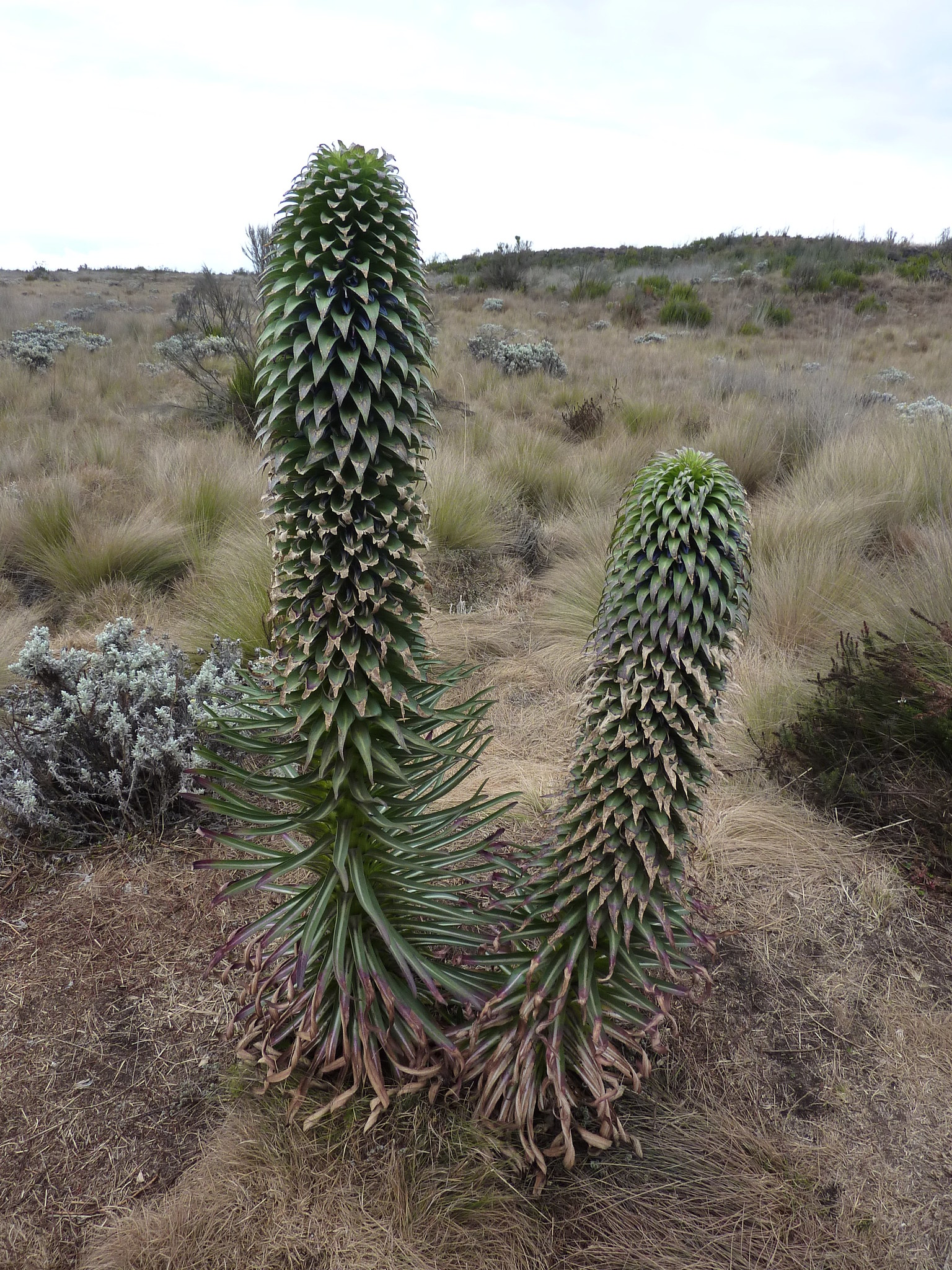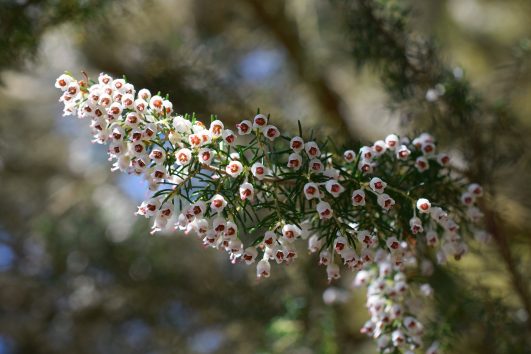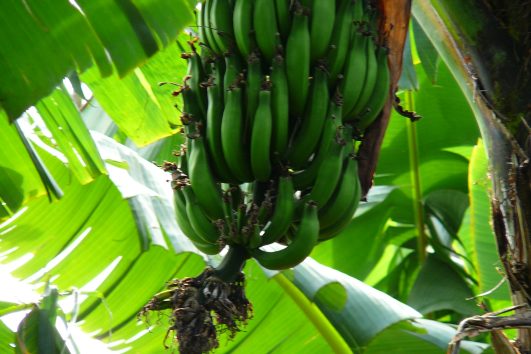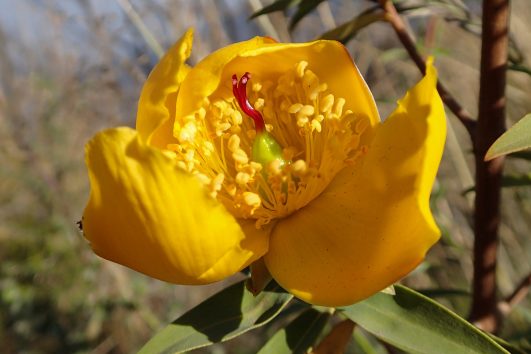The term “giant lobelia” encompasses various species within the Lobelia genus, primarily found in high-altitude, alpine environments.
Lobelia deckenii or the Giant Lobelia of Mount Kilimanjaro is a flowering plant belonging to the Campanulaceae family and is native to Tanzania’s mountainous regions. It’s also recognized as a threatened species in Kenya’s Cherangani Hills forests. Unlike its relative, Lobelia telekii, which prefers drier conditions, Lobelia deckenii thrives in moist locales like valley bottoms and moorlands, occasionally hybridizing with its drier-habitat cousin.
Each plant typically features multiple rosettes, each capable of living for decades before flowering once, producing a massive inflorescence and numerous seeds, then dying. This cycle allows the plant to reproduce multiple times, with more rosettes leading to more frequent flowering.
These plants can form between one to eighteen rosettes, interconnected underground. The slow growth in the alpine environment means it might take decades for a rosette to reach maturity and flower. After flowering, the rosette dies, but others connected to it continue to live.
Lobelia deckenii is unique as the sole alpine lobelia species on Kilimanjaro, found at elevations between 3,800 to 4,300 meters.
Variety on Mount Kenya: The subspecies Lobelia deckenii subsp. keniensis grows on Mount Kenya at slightly different altitudes, from 3,300 to 4,600 meters. Here, it’s less consumed by rock hyrax compared to Lobelia telekii, and both species are pollinated by birds like the scarlet-tufted sunbird and alpine chat. The re is another endemic Lobelia type on Mount Kenya called Lobelia Telekii.
Unique Adaptations: Known for its water reservoirs in rosettes, which freeze at night, protecting the central growing point or apical meristem from cold. This feature not only aids in survival but also inspired its nickname, “gin and tonic lobelia,” due to the crescent-shaped ice formations in its rosettes.
This plant’s existence in such extreme environments highlights its remarkable adaptations for survival, making it a fascinating subject for both botanical study and conservation efforts.
Here are some key characteristics and interesting facts about this plant:
- Appearance: It’s known for its large, rosette-forming leaves and tall, flowering spikes. The plant can grow to significant heights, with its blue or purple tubular flowers contrasting beautifully against its green foliage.
- Habitat: Lobelia deckenii thrives in the alpine zones of mountains like Kilimanjaro, between approximately 3,800 to 4,300 meters. This habitat is characterized by its harsh conditions, including cold temperatures, high winds, and intense solar radiation.
- Adaptations:
- Water Storage: Like its relative, the giant groundsel, Lobelia deckenii has adapted to store water in its rosettes. This water can freeze at night, protecting the central growing point or apical meristem from freezing temperatures. This adaptation has earned it the nickname “gin and tonic lobelia” due to the crescent-shaped ice cubes formed in its rosettes.
- Insulation: The plant’s structure, including its dense leaf arrangement, provides insulation against the cold, helping it survive in freezing conditions.
- Pollination: It’s pollinated by birds, notably the scarlet-tufted sunbird and the alpine chat, which are attracted to its vibrant flowers.
- Growth and Lifecycle: Lobelia deckenii is monocarpic, meaning it flowers once and then dies. However, it can produce multiple rosettes connected underground, ensuring its survival strategy in harsh environments.
- Cultural and Ecological Significance: While not as widely recognized as some other alpine flora, its presence contributes to the biodiversity of high-altitude ecosystems, offering a unique ecological niche.
- Care and Cultivation (for enthusiasts or botanical gardens):
- Fertilization: During growth, it benefits from potassium-rich fertilizers, transitioning to a balanced fertilizer once in bloom to enhance flower color and health.
- Diseases: It can suffer from conditions like yellow edges, dark spots, and leaf wilting, which are signs of various diseases or improper care, requiring attention to its environmental needs.
- Conservation Status: While not explicitly mentioned in the provided information, its habitat specificity might make it sensitive to climate changes or human activities affecting high-altitude environments.
Routes to See Lobelia Deckenii on Mount Kilimanjaro
Lobelia Deckenii is a striking plant species native to the high-altitude zones of Mount Kilimanjaro, characterized by its tall, spiky rosettes and adaptation to cold alpine environments. This unique plant can be found in the moorland and alpine zones of the mountain. Here are the specific routes where you can observe Lobelia Deckenii:
Lobelia dekenii is most commonly found in the Heath and Moorland Zone, typically between 2,800 to 4,000 meters (9,186 to 13,123 feet). It thrives in the open, sunny conditions of this zone, where the soil is well-drained, and the climate is cool but not freezing. As you ascend Kilimanjaro, you’ll encounter this unique plant along several routes.
Machame Route
On the Machame Route, Lobelia dekenii can be spotted in the moorland areas after ascending from the rainforest zone. The plant is particularly visible as the trail approaches the Shira Plateau, offering stunning views of the surrounding landscapes.
Marangu Route
Lobelia dekenii is visible on the Marangu Route in the moorland areas. As climbers move beyond the Mandara Huts, the landscape opens up, and the plant becomes more common, especially around the Horombo Huts area.
Lemosho Route
Lobelia dekenii can be seen early on the Lemosho Route, particularly as the trail leaves the forest and enters the heath zone. The plant thrives along the route towards the Shira Plateau and continues to be present as climbers move higher.
Rongai Route
On the Rongai Route, Lobelia dekenii is found in the moorland areas as the path ascends towards the alpine desert. The plant is more scattered here but can be spotted near the Kikelewa Camp area.
Shira Route
Lobelia dekenii is visible along the Shira Route as it traverses the plateau. The plant can be seen in abundance in the moorland areas, where the landscape is characterized by rolling hills and open spaces.
Umbwe Route
Lobelia dekenii is present in the Umbwe Route’s moorland sections. As climbers quickly ascend from the forest, the plant appears in the open areas before reaching the Barranco Camp.
Northern Circuit Route
This route offers numerous opportunities to spot Lobelia dekenii, especially in the heath and moorland zones. The plant is a common sight as the route navigates the northern slopes, providing a less crowded view of the mountain’s flora.
Additional information
| Habitat | Heath & Moorland Zone |
|---|

